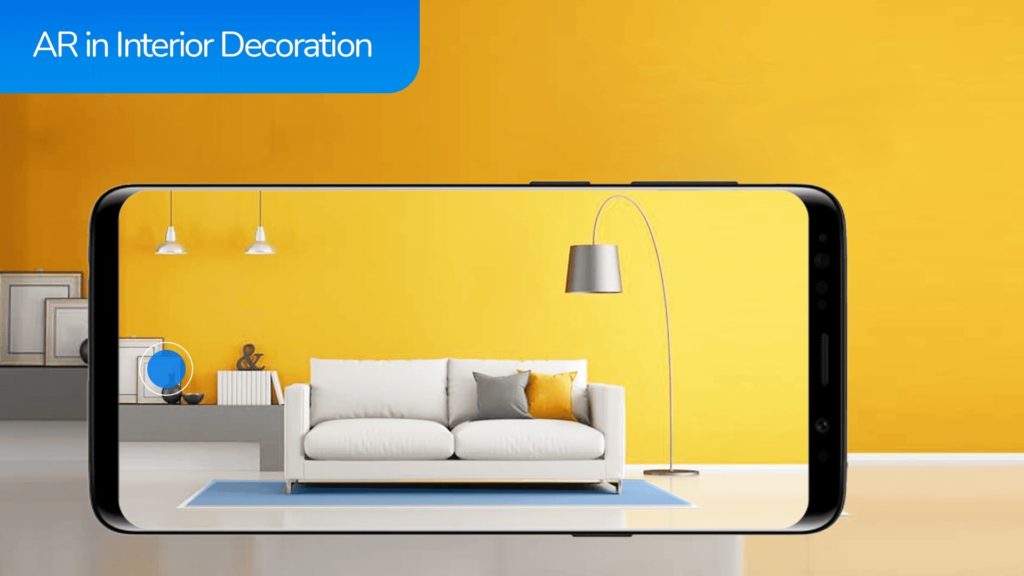Building a dream house is a lifelong desire for many. After years of savings, planning and hard work, an individual or a family decides to build their dream house.
Lilly and James were excited to start their new house project but were confused regarding its design. The colors suggested by the architect were bad with only 2 bathrooms and no space for washing machine. Hence, the excitement of the couple went into vain after the first meeting with the designer leading them into a state of delusion.
Not only Lilly and James’s, but there are millions of clients who are left disillusioned in such a situation.
Now, flip the above story, Lilly and James were a couple excited to start their dream house project. The architect and the interior designer showed them the 3D 360-degree view of their new home. The floor map was on a screen and not on papers. The couple was seeing a virtual version of their new home!
AR revolutionizing the world of interior designing
The revolutionary AR (Augmented Reality) technology makes the other side of the story possible. The game Pokemon Go uses the same AR technology. When Pokemon fever gripped people across the world people went crazy catching their Pokemon. AR is a computer-generated content, overlaid on the real-world environment. Industries including healthcare, education, real-estate, farming, and broadcasting are already using this technology.
“Augmented reality plays with the existing environment and overlays the features on it.”
It often becomes challenging to visualize a piece of furniture, color of the walls and the floor map for a new project. The mood boards are no more in fashion now. A new age customer wants a customized or personalized solution exactly according to their needs. Augmented reality in interior design is the revolutionary solution to the constraints faced by clients and designers in visualizing the actual project like never before.
Augmented Reality in interior designing
The user uses a mobile device to overlay the real world with virtual elements. The AR app lets the user see furniture or wall paint that would look real!
IKEA one of a leading furniture giant, uses a catalog app in which user scans and selects the image from a printed catalog and the user can then access extended rich content!
This app allows the user to place up to 90 products from the range and explore the space in 360 degrees. As a result, in the year 2016, IKEA increased its sales by 35.1% from 27.6% in 2012. Look how the child is holding a big green sofa in hands using the AR app!
Advantages of Augmented Reality in interior designing for clients
- Better Visualization – AR in interior design help the client visualize the project before it is developed. Using AR in interior design gives an ability to the user to design the space the way they want. Be it a rustic, beach or boho style home, AR will let the user visualize that all in a go. A mobile phone or a tablet loaded with samples is all needed to transform the userspace.
- Design editing abilities -User will also get an ability to edit the designs and make changes even if the design is at the final stage. So, now users need not worry about the tedious corrections that are done in actual décor and furniture.
- Better guidance– AR in interior design will let a user guide the designer in the best possible manner. Even the minute details related to the designing process can be communicated interactively using AR.
- Find and try products remotely – The clients can try various products for their new project such as the furniture without paying a penny.
Advantages of AR in interior designing for designers
- Interactive idea presentation – Using AR it would be much easier for designers to present their innovative ideas to clients. A design idea board may not be enough for the clients with dynamic needs.
- Better collaboration – The AR in interior design will also help the designer to collaborate in a better manner with both the architect and the clients. Improved collaboration between client, designer, and architect results in better design ideas.
- Profitability – An effective AR visualization for the clients will help in accelerating the purchase and designing process along with increasing the probability of closing successfully.
- Competitive edge – The designers can gain a competitive edge by giving their clients a complete view and information about their future projects.
- Increased customer retention rate – The AR in interior designing will not only help designers in attracting new clients but also in retaining the existing ones.
3D augmented reality and Virtual reality are the technologies that are serving the needs of new-age customers. Personalization appeals 90% of the customers hence using AR, designers, and architects can attract and retain the customers like never before.
Augmented and Virtual reality is the future of interior design. Things that were once impossible are now possible with these immersive technologies. Printed catalogs may get obsolete making interior designing more intelligent, convenient and lively.
Welcome to a new future of Interior Designing! Stay Tuned!

